Where there is water, there is life, they say, and Iowa — a state in the Midwestern region of the United States — has two prominent rivers bordering it. The Missouri River defines its east border while the Mississippi River outlines its western edge. It is no surprise that Iowa makes an excellent breeding ground for various species. In fact, no other state comes close to Iowa in terms of pork production — Iowa has the highest population of pigs in the United States. Asides from pigs, though, there are a lot of fascinating animals in Iowa. Today, we’ll focus on the largest animals in Iowa and where you can find them.

Largest Animals in Iowa and Their Habitats
Iowa, also called Hawkeye City, has about eight national parks you must see on your next trip. Iowa is also home to the Blank Park zoo, the only accredited zoo in the state.
These are home to some of the largest of the 1,100 animal species found in Iowa.
1. The Amur Tiger
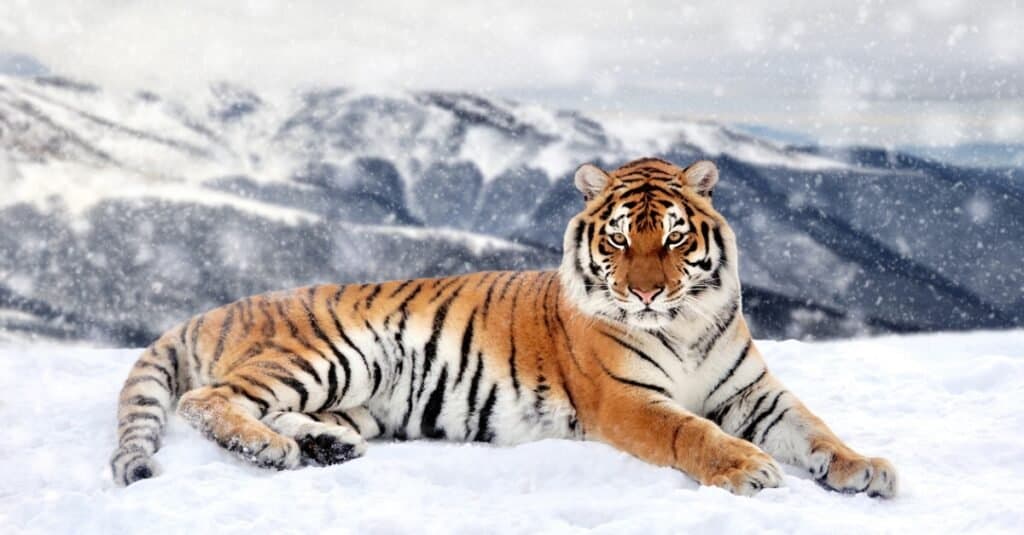
Amur tigers are gorgeous creatures that can be found in Iowa’s Blank Park Zoo.
©iStock.com/Byrdyak
The Blank Park Zoo protects one of the endangered species of tigers, the Amur tiger, formerly called the Siberian tiger. Siberian tigers are the largest of the cat family, followed closely by Bengal tigers.
There are only 560 Siberian tigers currently protected in zoos and parks. About 400 Amur tigers remain in the wild and are highly-priced for their hides and medicinal benefits.
A fully grown Amur tiger weighs up to 700 pounds and is between 5 to 10 feet long.
The Blank Park Zoo welcomes individuals of all ages within the hours of 9 am to 4 pm (although the park closes by 5 pm). An adult ticket costs $14, while a child ticket costs $8. Entry is free for children under one.
2. Black Bears
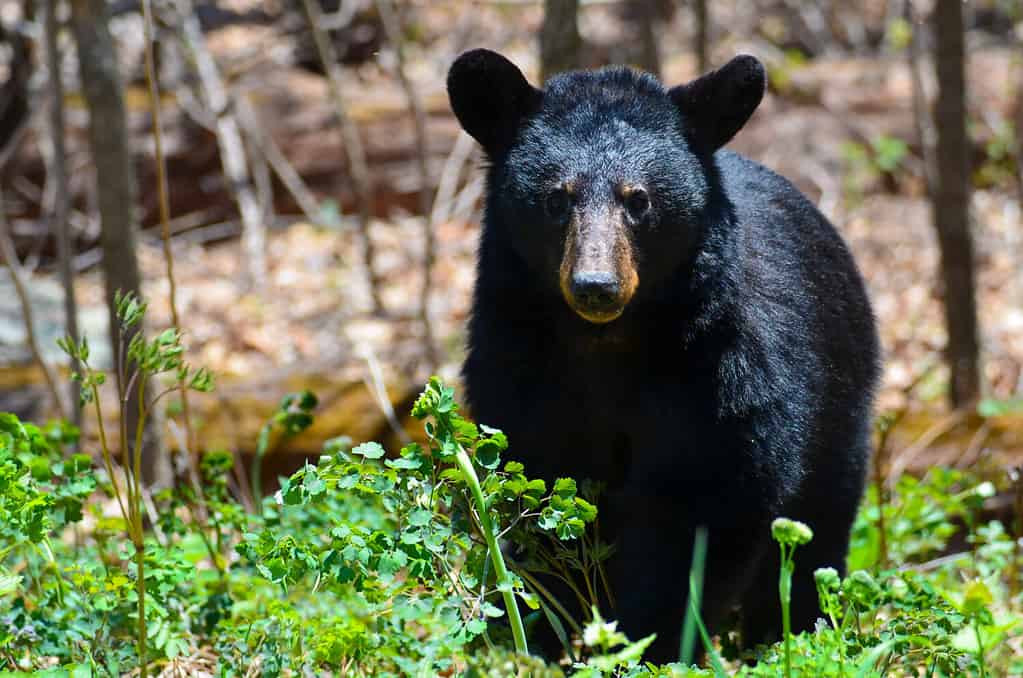
There is a smattering of black bears in the woods around rivers in Iowa.
©Orhan Cam/Shutterstock.com
Black bears aren’t uncommon in the Upper Midwest. They live in deciduous forests and the alpines. They rarely inhabit open plains, but you can find a few black bears in the woods around a river.
Bears have a diverse palate; They are omnivores and can eat berries, grains, and meat. Only about 30% of a bear’s diet comes from animal proteins. Bears rarely attack humans; they prefer to keep their distance. You should too. A bear only attacks when they feel they are threatened.
The American black bear spans about 1.4m in length. A grown male black bear weighs between 130 and 661lbs, while the adult female weighs 90.3-174.2lbs
3. Mountain Lions

Mountain lions have been spotted in Iowa.
©Scott E Read/Shutterstock.com
Call it a panther, puma, or cougar, the mountain lion is one of the largest cats we know. The Iowan government receives numerous reports of mountain lion sightings.
Mountain lions master the art of ambushing prey. Their top pick for a meal includes deer and other ungulates. Ungulates include (but are not limited to) white-tailed deer, mule deer, tapir, giraffe, zebra, horse, elk, reindeer, pig, goat, sheep, caribou, bison, buffalo, musk ox, moose, pronghorn, and various antelope, gazelle and other deer species found in the U.S. and throughout the world. Many tourists and locals mistake large cats and ferals for mountain lions. An adult male lion weighs about 116.8 to220.5lbs, while an adult female weighs 19.8-141.1lbs. They may be 6.6 to 7.8 feet long.
4. Whitetail Deer
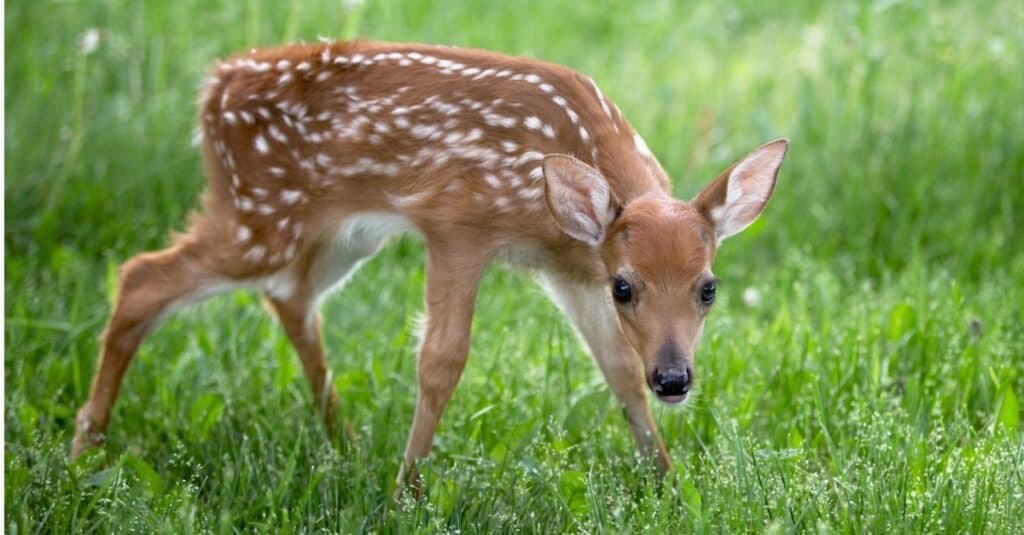
Whitetail deer can be found all throughout Iowa.
©iStock.com/Lynn_Bystrom
Iowa has a vast population of whitetail deer. As of 2020, the state had 445,000 deers.
In Iowa, the hunting season begins in December, right after the rutting season. During this breeding season, male deers sacrifice strength and vitality, competing for female partners. The more males are in the vicinity, the more competitive the rutting is. The strongest male gets to mate with the most females. The dense deer population is because deer hunting comes after they’ve had the chance to reproduce.
Iowan whitetail deers hide between tall blades of grass to avoid the hunter’s eyes.
Hunters report that Clayton County is the best spot for hunting or deer watching.
5. Foxes

Foxes populate the state of Iowa in spite of growing industrialization.
©Ondrej Prosicky/Shutterstock.com
You are sure to meet a red or gray fox on your way through Iowa. Foxes continue to populate Iowa, despite growing industrialization. You can find a fox in the forests and the low grasslands. Foxes may even pay you a visit in your tiny garden if you have a lot of rats and squirrels playing around.
If a fox visits your garden or farm, it is a sign that you’re raising your plants well, and they are capable of supporting advanced life forms.
Foxes do not hibernate during the winter, so you may still come across one even if you travel during the colder seasons.
A larger fox weighs from 20-30 lbs and runs at about 31miles/hr.
6. Coyotes
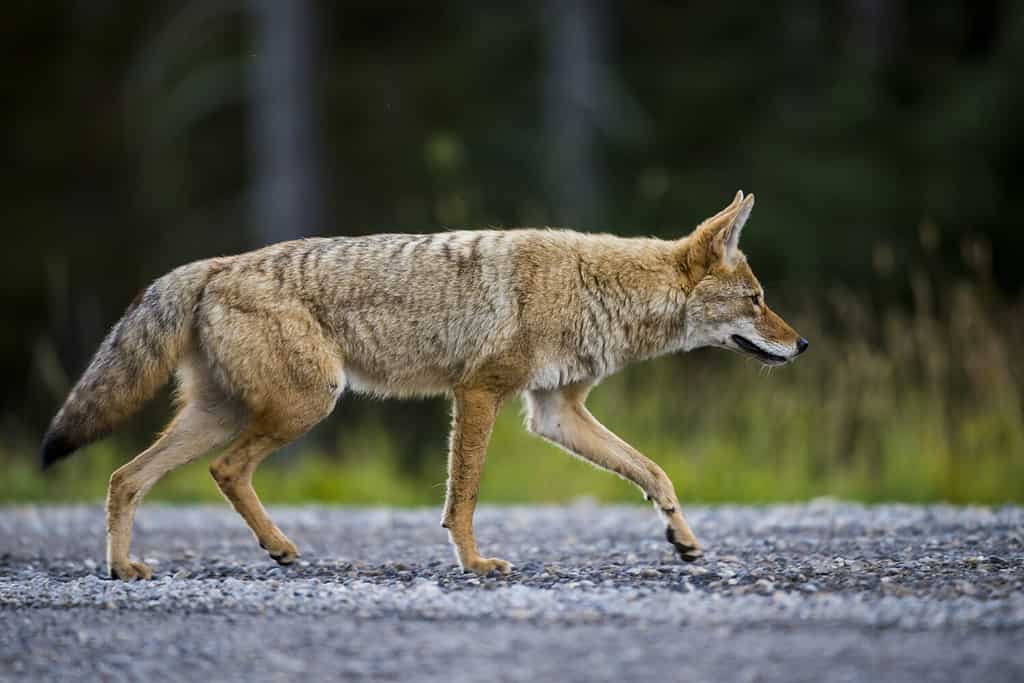
One of the most common predators in Iowa is the wild Coyote.
©BGSmith/Shutterstock.com
Coyotes are the most enormous canines in Iowa. They are also one of the most common predators in Iowa. Coyotes prey on squirrels and birds, just like foxes. This makes them natural enemies. Coyotes are a bit faster than foxes; they can run at 37.3 miles/hr.
An average coyote weighs 30-35 pounds. They can be found in all of Iowa’s counties.
7. Bobcats
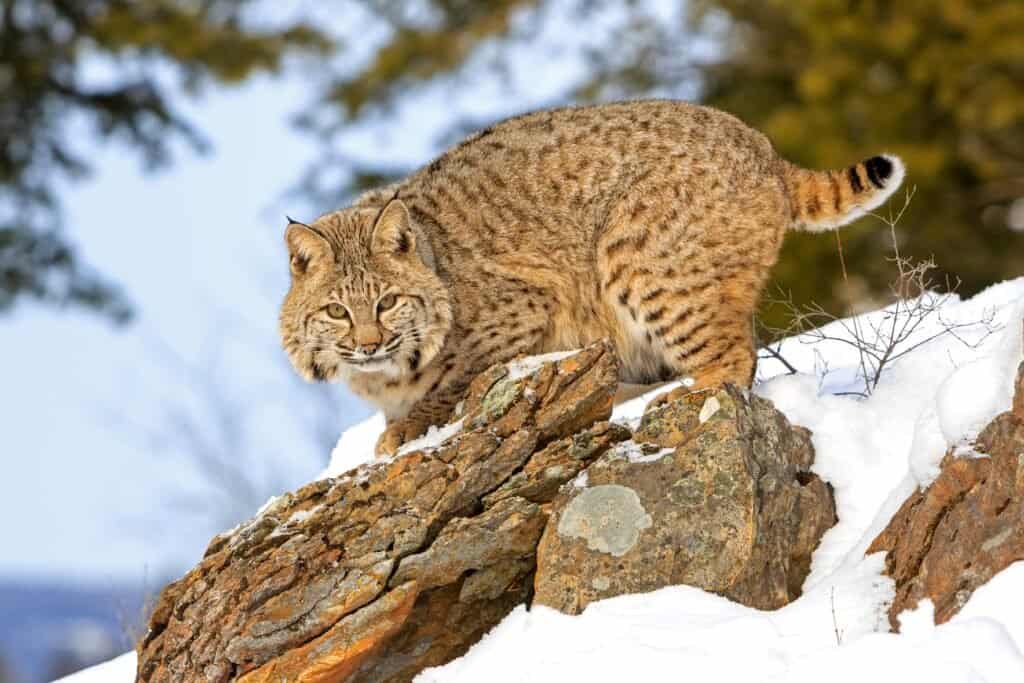
Bobcats can be found in Iowa’s southern region, but they are not easy to spot.
©Jack Bell Photography/Shutterstock.com
There are at least 3000 bobcats in Iowa, with most of them parading the state’s southern areas. These numbers are almost a miracle. A few decades ago, bobcats were on the brink of extinction from Iowa. However, they were able to build their numbers back into the thousands.
It takes a keen eye to see a bobcat–they are shy and secretive. If a bobcat moves into your backyard, give it a few days. These large cats love to travel, making a den out of rocks wherever they go.
You may mistake a bobcat for a small mountain lion, but its short bobbed tail gives it away. An adult bobcat weighs about 20 to 30 pounds.
What to Do When You Encounter A Predator
Encounters can happen while touring; It would be best if you are prepared for the possibility. As human and animal territories collide, you may meet a mountain lion on a hiking trail. These few tips may come in handy:
- Please don’t attempt to feed a wild animal. Baiting your dog with food may be a good idea, but don’t try it with a wild animal. They may take your treat and a bit of your arm too.
- Make some loud sounds. You may have run into each other by coincidence. Don’t make startling noises, but don’t also try to conceal your presence. Making some noise lets animals know there are humans around, and they can give you a wide breadth or walk away. Surprisingly, animals are as unwilling to run into us as we are them. Making loud noises will help scare off the animal because they will see you as a threat.
- Don’t run. Stick to roads if you want to go on a quick jog. Running stimulates an animal’s survival instincts. They assume you are prey if you run, so they’ll chase you.
- Maintain eye contact and don’t crouch. The animal may think you want to attack if you assume a low stance. Stay upright, maintain eye contact, and back away slowly.
Most importantly, carry a first aid kit containing many bandages to stop bleeding.
Wild animals are closer than you think! Read this article to learn about the 10 Most Friendly Wild Animals in the World.
Conclusion
Iowa is home to a host of interesting animals, large and small. The Amur tiger is the largest animal currently residing in the state. Asides from the tiger, mountain lions, and black bears are predators worthy of note. Foxes, bobcats and coyotes will add some excitement to your next trip to Iowa.
Summary of the 7 Largest Animals in Iowa
| Animal | Size | |
|---|---|---|
| 1 | Amur Tiger | Weighs up to 700 lbs; 5 to 10 feet long |
| 2 | Black Bears | Males weigh 116.8 to 220.5 lbs, and females weigh 19.8 to 141.1lbs; can be 6.6 to 7.8 feet long |
| 3 | Mountain Lions | Males weigh 116.8 to 220.5 lbs, and females weigh 19.8 to 141.1 lbs; can be 6.6 to 7.8 feet long |
| 4 | Whitetail Deer | Males weigh 150 lbs, while females weigh 100 lbs |
| 5 | Foxes | Weighs 20-30 lbs |
| 6 | Coyotes | Weighs 30 to 35 lbs |
| 7 | Bobcats | Weighs 20 to 30 lbs |
The photo featured at the top of this post is © iStock.com/Byrdyak
FAQs (Frequently Asked Questions)
Are there any cougars in Iowa?
There have been multiple verified cougar sightings in Iowa. Cougars are also called mountain lions or panthers.
Did moose ever live in Iowa?
Yes, there are moose in Iowa. Thanks to their enormous antlers, they stand out in the grasslands and open plains of Iowa.
What is Iowa’s state animal?
The American goldfinch is the official state animal for Iowa. It is a bright yellow bird that personifies the lush green lands of Iowa.
The American goldfinch inhabits open plains, marshlands, and orchards.
What is Iowa’s nickname?
Its nickname is Hawkeye, a name chosen in honor of the Native American Sauk tribe leader, Black Hawk.
Thank you for reading! Have some feedback for us? Contact the AZ Animals editorial team.






